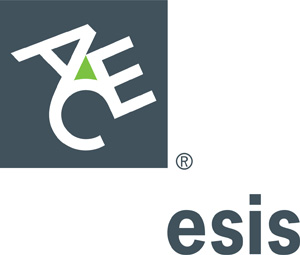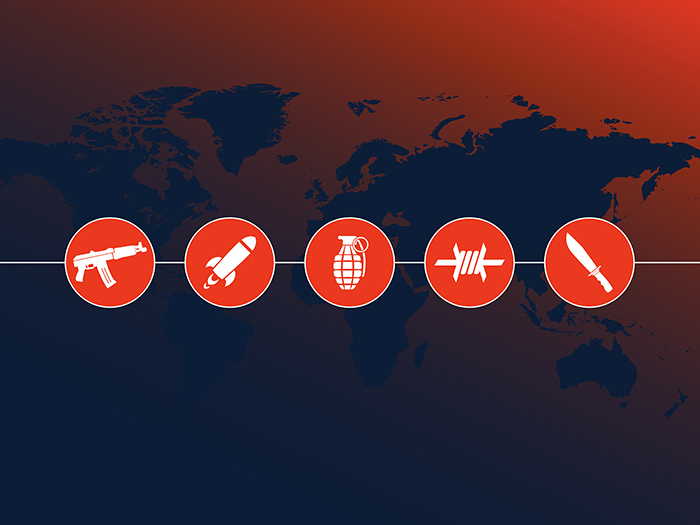Risk Scenario
The Downward Spiral
Disclaimer: The events depicted in this scenario are fictitious. Any similarity to any corporation or person, living or dead, is merely coincidental.
Part One
Molly Granger took a deep breath as flurries fluttered through the cold November Minnesota morning air. Just four more steps and she’d be at the front door of the warehouse distribution center that had provided her with a badly needed second income for her family for the past six years.
Married with three children, Molly had just dropped her youngest, Melissa, off at daycare for the first time. Molly was large-framed and had always struggled with her weight. Now she was going back to work with 20 extra pounds that she had put on during the pregnancy.
She tried not to feel self-conscious as she approached the front door of the 600,000 square-foot warehouse that held products for one of the largest online retailers in the U.S. Punching in, Molly smiled. One of her female co-workers had left her a note with a bag of red licorice next to it in her mail inbox.
“Welcome back. We missed you!” the note said.
Molly knew in an instant that she had missed this place too. She liked work and the order it gave her life – and God knows she needed the money.
Molly’s dad, the Duluth Metals Corp. mine foreman, had instilled in her a good work ethic. Molly was easy to get along with, didn’t complain much and knew enough to ask for help when she didn’t understand something.
But as soon as she saw the bustling warehouse floor, Molly took another deep breath and felt icy waves of nervousness in her belly. She just happened to come back to work on Cyber Monday, the busiest day in the online retail industry work calendar.
Molly checked in with her supervisor Max who greeted her warmly and gave her the day’s marching orders. Molly waited until she was out of Max’s sight though before putting on her right wrist the brace she used while doing chores around the house.
Even with being at home for the past four months, the pain in her wrist and forearm that she had struggled with for more than a year hadn’t gone away. She didn’t want Max to know about it though, fearing he would cut down on her hours.
It was 11:20 a.m. when bad luck caught up with Molly Granger. She was rounding one of the shelving aisles carrying a 25-pound box in her left hand when the iPhone attached to her hip buzzed. It was the day care center.
She picked up her phone with her free hand, puzzlement mixed with worry.
“Is something wrong with Melissa?” she wondered.
Just then Billy Hixton, the rough-around the edges company forklift driver, came around the corner, driving too fast, as usual, his ear buds deafening him with the music of the nu-metal band Trivium, as usual, despite how many times he’d been warned not to engage in either at work.
Distracted as she was by her call, Molly’s reaction time was compromised. She jumped back to avoid Billy and the forklift. But as she did so she backed into the unforgiving end of a boxed shelving unit that protruded from the shelves.
Molly fell to the mercilessly hard warehouse floor with a sharp cry, her iPhone skittering away from her, still buzzing with the call from the daycare center that went unanswered. She landed hard on her left shoulder when she fell.
Billy jumped off of the forklift and helped Molly to a sitting position. Pushing aside his anger at Billy and his observation that Molly was wearing a wrist brace, Max radioed the on-site nurse.
Molly told the nurse she had pain in her middle back and her shoulder from the fall. The nurse made a note of Molly’s comments and recommended that Molly see a doctor that afternoon.
Part Two

Initially Molly was diagnosed with soft tissue injuries in her shoulder and her back. At the urgent care center, an MRI is considered but not implemented and the doctor decides the best course of action is physical therapy.
When Molly talks to the doctor, the focus of their conversation is on her back and shoulder injuries from the fall. In her confused state, Molly neglects to tell the doctor about her wrist and forearm pain. To manage the pain from the fall, Molly is prescribed Ibuprofen.
Molly dutifully makes her physical therapy appointments for the next three weeks while she stays at home. The incident, the visit to the urgent care center and the fact that Molly missed three weeks from work establish Molly’s case as a workers’ compensation claim. The company claims manager sees nothing about the claim that would flag it as a potentially long-term or catastrophic claim, so her case falls in with dozens of others within her company that aren’t marked for intervention or special supervision.
Molly’s supposed to be home to get rest. But workers’ comp indemnity payments are only a fraction of her hourly wage. With her husband Randy’s hours as a construction worker drastically reduced by the recession, childcare expenditures are out of the question until Molly can go back to work.
The pain in her back and shoulder is lessening but still bothersome. To compensate, as she lifts Melissa to feed and bathe her and as she cooks and cares for her other two children, Molly is using her right hand more than she would want to. The pain in her wrist and forearm are getting worse. In fact they have gotten so bad that she can’t lift a sauce pan in her right hand without grimacing in pain.
She goes back to the doctor seeking relief and with no hesitation he prescribes her Actiq. It’s a small town and Molly is a family friend. To spare the busy mother of three trips to the pharmacy, the doctor thinks he’s doing a good deed by getting Molly a 40-pill prescription.
Molly was never much of a drinker. The way her dad and her uncles drank whiskey scared her away from it. She had only tried pot a couple of times in high school and it was with Jenny Jorgenson. It seemed like almost everybody smoked pot with Jenny at least one time in high school. When she does have a beer with friends, Molly has been known to have a cigarette or two, but it’s not like she carries a pack of them around with her.
Molly’s first evening on Actiq is nothing short of blissful. The pain in her wrist and forearm are gone and for the first time since she married Randy she feels free from anxiety. The family’s credit card debt and the fact that the front tires on the Ford Explorer are almost bald recede into the background.
After Randy and the kids doze off that night Molly takes another Actiq, even though she is already feeling no pain. Watching Jimmy Kimmel, Molly feels so good it’s like she’s part of the studio audience.
With her pain under control and her back injury healed, Molly decides to go back to work. After all, the family bills aren’t going to disappear.
Thinking she’s doing the right thing to control costs, the claims manager for the online merchandiser works to get Molly back in the swing of things as soon as she can. Molly can be tough if she has to and she convinces the claims manager that she doesn’t need an independent medical review.
In fact, she tells the claims manager she would refuse one even if it were ordered and paid for by the insurance company. To avoid confrontation, the claims manager bends to Molly’s will and Molly is sent back to work. The claims manager notes that Molly is still using Actiq but does not know that Actiq is an analgesic opioid that can have a devastating effect on Molly.
Part Three
It’s during a long Easter afternoon at her mother’s that the fabric of Molly’s coping mechanisms begins to unravel. Caught up in the formality of church services and helping her mother cook and serve the Easter ham, Molly forgets to take her Actiq.
She’s carrying a large bowl of mashed potatoes to the table in her right hand when she gets bumped and the bowl almost slips out of her hand. As she shifts her grip to maintain her hold, a bolt of pain shoots through her that almost brings her to her knees.

The next Monday at work, Molly can no longer hide her wrist weakness and pain. Her supervisor Max refers her to a company claims management specialist who augments her file with this new information. Now, to go along with her claims costs from the work injury, Molly’s company has her on the books for a wrist condition that they believe is work-related.
Under the now more intense supervision of the company claims manager, Molly sees a company-recommended specialist and his diagnosis is bilateral carpel tunnel syndrome. The specialist recommends surgery but Molly tries to delay surgery. In her mind, there’s no way that she can take off work now.
Molly used up her Family Medical Leave Act time when she was pregnant. Randy’s been laid off and the family finances are spiraling downward: Any savings they had have disappeared. Cigarettes, once just a now and again thing for her, are also much more a part of her life. Randy is shocked when he finds a pack of Camel Lights in the Ford. Rather than lose her pregnancy weight when she got back to work, Molly has gained weight. The five-foot-five Molly now weighs 175 pounds.
Molly’s work habits have also deteriorated. Four times in the past month, she’s shipped the wrong item to an online retail customer. She has also started to develop a pattern of absenteeism. She’s missing work on average one day a week now. Under the load of the painkillers, she has a hard time getting up in the morning. Max makes a note of her poor job performance.
Alarmed by Molly’s drug intake, her weight gain and what is now an obvious smoking habit, Molly’s claims manager calls a meeting with Molly and her supervisor. In a gambit to keep her drug flow going, Molly tells them both the pain in her wrist is unending and worsening. She gets teary, acknowledging that her life is unraveling, but there isn’t much she can do now to break her addiction and her wrist pain is still killing her.
A visit to second specialist places Molly’s case securely in the category of a catastrophic claim. This time she is diagnosed with thoracic outlet syndrome, a rare condition that results in a permanent injury claim.
Her family doctor has tried to slow down her consumption of Actiq but Molly is now a full-blown addict and she is stonewalling his attempts to manage her. To keep the peace, he maintains her prescription: But that’s not enough for her now.
Molly hits a new low when, on a visit to her doctor, she makes off with one of his prescription pads. She’s soon doubling her intake by forging his signature on prescriptions she fills in a neighboring town.
What’s worse, she’s started compounding the effects of the Actiq with wine coolers. Molly is buzzed now almost every waking hour. Randy still isn’t back to work and the fights fueled by money worries and Molly’s drug and alcohol abuse are becoming more and more volatile.
Summary
A work injury that should have been more effectively managed turns into a catastrophic claim when the injured worker masks her pain with a narcotic pain killer, becomes addicted to opioids, and suffers a long-term disability because her initial work-related injury is misdiagnosed and left untreated for too long, leading to permanent disability for the worker and high costs for the employer.
1. Effective, early intervention: In Molly’s case, an obvious, pre-existing, work-related injury is overlooked not only by Molly’s immediate supervisor and the company’s on-site nurse but the case manager assigned to Molly’s case. The case could have had a much different outcome if Molly’s injury had been appropriately observed and managed from the beginning.
2. An earnest focus on narcotics use: Once Molly’s case had become an open workers’ compensation claim, her use of a narcotic medication and her subsequent long-term and heavy use of that opioid should have been flagged by the company’s claims manager. Barring that, the company’s pharmacy benefit manager or its third-party claims administrator should have flagged this opioid use and developed a plan with a treating physician to intervene and wean Molly off of opioids.
3. Provider networks: The use of payer or third party administrator-controlled and managed provider networks is yet another management tool that Molly’s case illustrates the potential benefits of. In Molly’s case, the physician dispensing addictive medications may have had the best of intentions. But the length of time that Molly was being given addictive medications and her deteriorating physical and psychological condition were circumstances that begged for peer review at the very minimum.
4. Predictive analytics: Molly’s addiction and downward spiral also points us toward the evolution of predictive analytics as it is beginning to be employed in workers’ compensation claims management. Molly’s obesity, the fact that she had family members who displayed addictive behavior and her personal financial troubles were all red flags that a pharmacy benefit manager or insurer with an effective predictive analytics model would have picked up and been able to act on. Carriers are beginning to place great emphasis on the ability of predictive analytics to be a useful tool in managing this sort of claim scenario.













